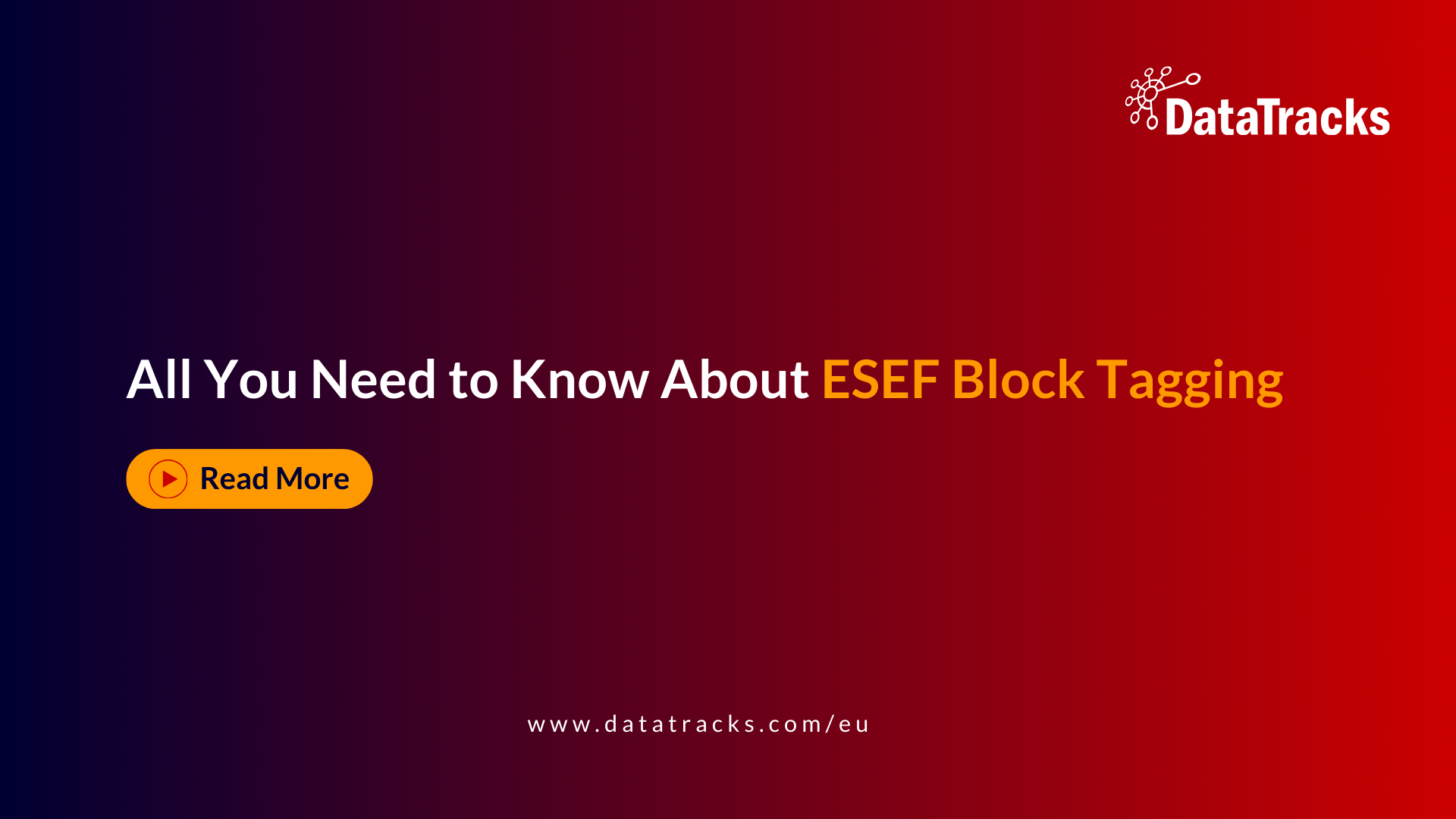Top 3 Tips for ESEF Reporting
The European Single Electronic Format (ESEF) was enacted on 1 January 2020. ESMA (The European Securities and Markets Authority), EU’s securities regulator, requires issuers on EU-regulated markets to prepare their annual financial reports in this electronic reporting format. ESEF is ESMA’s effort to improve the analysis of companies’ financial statements and make the information more readily available to businesses and auditors on a single platform in the same format. It is an iXBRL format, an electronically tagged XHTML file requiring a specific iXBRL tagging or conversion technology. Tips for ESEF reporting can help you ensure error-free reports in compliance with the requirements laid down by ESMA.
ESEF is the future of reporting for EU-regulated markets to improve the data quality and accessibility in financial reporting. It aims to bring financial reporting into the digital age. There are also other benefits of preparing your financial statements in iXBRL, including:-
- Higher quality of data
- Lower filing and preparation costs
- More structured data
But before preparing your financial reports in ESEF, here are some recommendations to consider.
Tips for ESEF Reporting to File Compliant Reports with ESMA
Have a Thorough Understanding of ESEF Rules
Understanding the ESEF rules is essential for preparing reports that comply with ESMA’s requirements. Whether your financial statements are prepared by an in-house team or outsourced to a third-party iXBRL expert, knowing the ESEF rules and the specific tags applied to the report is crucial. If you decide to handle your financial reports in-house, having reliable financial reporting software is the first step towards ensuring compliance.
Identify the Root Causes of Errors in ESEF Preparation
For EU-regulated listed companies, preparing reports in ESEF means producing your annual report in XHTML and tagging the financial statements with iXBRL tags. While many companies focus on issues related to iXBRL tagging and rules, they often overlook problems arising from converting PDF files to XHTML. Addressing these root causes can significantly improve the accuracy and quality of your financial reporting.
Start Your ESEF Preparations Early
The taxonomy used for ESEF financial reporting is based on the IFRS taxonomy, which is updated annually to provide a hierarchical structure for classifying financial information in reports. As an issuer, it is vital to stay current with these taxonomies, guidelines, and rules. Detecting potential issues early allows issuers to rectify errors and ensure their reports comply with ESMA’s requirements. Starting preparations early provides ample time to review the ESEF tagging and the final report before submission. It also gives auditors enough time to review the tagged output thoroughly.
Upgrading your approach to ESEF reporting can lead to smoother compliance with ESMA regulations, ensuring that your financial statements are accurate and error-free.
Way Towards Error-Free Financial reporting? Outsource!
Companies preparing their financial reports following ESEF can either prepare them in-house or outsource to an ESEF expert. If you prepare them in-house, these tips for ESEF reporting can come in handy. But outsourcing is your best bet if you want to streamline your filing process and submit error-free reports with ESMA.
The future of financial reporting is digital, and machine-readable reports are the way forward. With an ESEF partner like DataTracks, you can ensure quality, reliability, and flexibility of your financial reports. Providing XBRL certified ESEF Reporting Software solutions, DataTracks has experience of 200,000 successful reports in 26 countries for more than 16 years. By constantly updating their software, DataTracks comply with every regulation laid out by ESMA and provide front-runner XBRL software solutions and service.
So if you are looking for an error-free ESEF filing, DataTracks can be your ideal choice. Get in touch with an ESEF expert @+31202253702 or email at enquiry@datatracks.eu TODAY!
